Meteoroids and meteors
Introduction
Meteors are caused by the entry of meteoroids (rocks in the Solar System) into a planetary atmosphere. On Earth, they last on average 0.3 s. They are today the most efficient way to exchange matter in the Solar System. Meteoroids are ejected from comets (by outgasing process) or from asteroids (by collisions). As such, they can teach us a lot about the composition and history of the Solar System. However they are extremly hard to detect, because they are too small to be directly detected in a telescope, and too large to efficiently diffuse the Sun light. Infra-Red observations have revealed dense meteoroid stream before they collide with planets.
The work at Pegase is dedicated to understanding their origin and role in our planetary system. For this, unprecedent work on dynamics of meteoroid streams and observation tool development are currently going on.
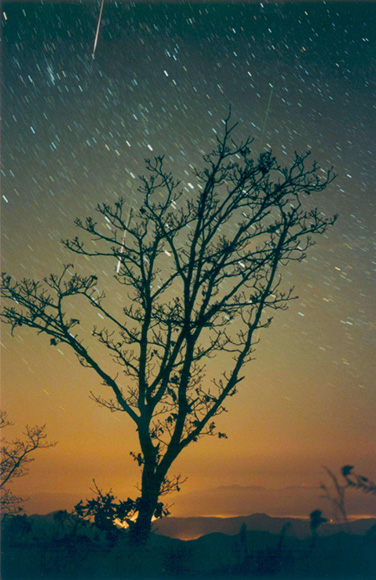
Dynamics of meteoroid streams
To perform the prediction of meteor showers on Earth has haunted researchers since the public failure to predict the 1899 and 1998 Leonids. Since then, McNaught & Asher (1999) have pointed out the necessity to consider meteoroids on individual orbits, independent from the parent comet. We have taken one step forward by examining how the outgasing of the comet can tell us about the amount of meteoroids that will hit our planet (Vaubaillon et al. 2005). For this, heavy parallel numerical simulations are daily run on supercomputer at CINES. The prediction of meteor shower is now a regular task and is useful for science purpose (plan observation with regular or exceptional means, confront the predictions and the observations) as well as for space agencies (CNES, NASA, ESA), e.g. in order to protect artificial satellites.
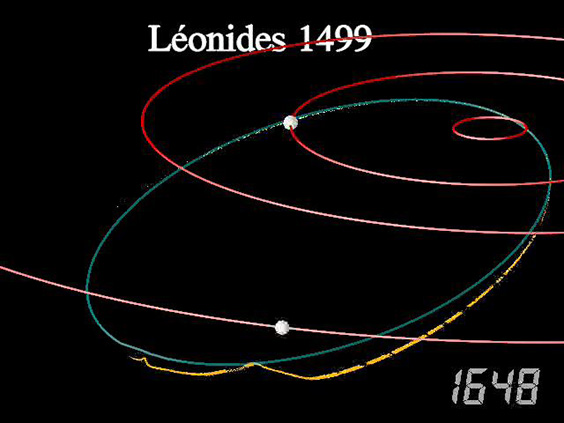
Moreover, dynamical studies involve the role of non-gravitational forces is primordial for such tiny particles. Group behaviour can be described and studied. The role of planets (e.g. Jupiter) or the fragmentation or even explosion-like behaviour of comets can be established in order to explain past showers. Life time expectancy can be derived from “long term” studies (in the case of meteoroids, 50 kyrs is already a long time, because of frequent close encounters with planets and Poynting-Robertson drag). The age of the stream can be derived thanks to the duration of a shower. The demonstration of the presence of three body resonance was performed for meteoroid streams. The definite proof that meteoroids might self-fragment in space was provided.
Lost parent bodies can be recovered. Actually, out of hundreds of meteor showers, only a few dozen have known parent bodies today. Our work deals with finding new methods to unveil new parents and understand the Earth meteoroid environment. Moreover, the very existence of a proven association needs robust scientific arguments to be validated.
In addition, the characterization of chaos in meteoroid streams was performed by A. Courtot and is an additional tool (in complement to other tools) to assess the existence of meteor showers.
Meteoroids are actually not much different from small asteroids (the boundary is hard to define...), and we have participated to a study examining the ocurrence of Earth mini-moons by capture of small asteroids.
Meteor shower are not limited to the Earth. Any planet having an atmosphere with have meteors. This is of special interest for Mars or Venus, around which spacecraft might detect meteor showers. On Mars, the tiny atmosphere can hardly prevent even rather small asteroids (or let say large meteoroids) from hitting the ground. The InSight space mission aims to put seismometers on the Martian surface to study the interior of the planet. Planetary bodies without atmosphere reveal meteoroids thanks to flashes.
However, all these theoretical works need to be confronted to observation, which sometimes demends exceptional means.
Ground-based observations
Meteor observation networks
The observation of meteoroids through e.g. meteor showers, with professional means was completely inexistant until 2010. The CAmera for BEtter Resolution NETwork (CABERNET) project aimed at measuring the most accurate meteroid orbit, in order to unveil their origin. For this, we developed the most accurate meteor camera, in terms of space and time reslution. A 40x27 deg^2 camera was developed, that provides us with a ~6 arcsec and 100Hz space-time accuracy. Today the only competing device is the Canadian CAMO system. Auriane Egal demonstrated the limits of today methods of trajectory and orbit computation, and proposed a new way to achieve a better reduction of any meteor observation.
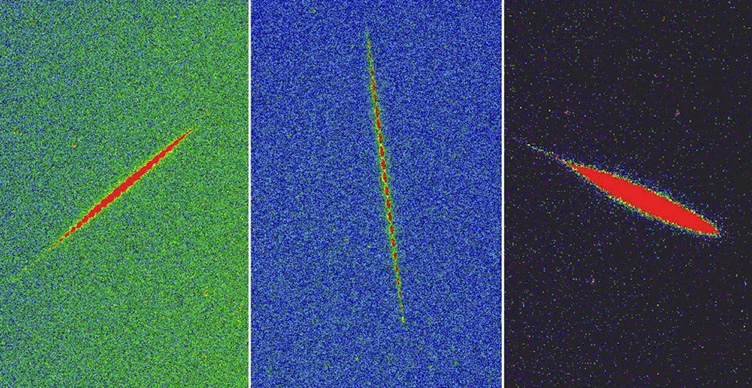
The Fireball Recovery and InterPlanetary Observation Network (FRIPON) project was funded by ANR (2014-2017) to cover metropolitan France with 100 allsky cameras. The scientific goal is exactly orthogonal to CABERNET: to observe all fireball falling in France, and recover the associated meteorite. For this, Pegase people are involved in the reduction pipeline to compute the trajectory and orbit, taking benefit from A. Egal’s work on CABERNET.
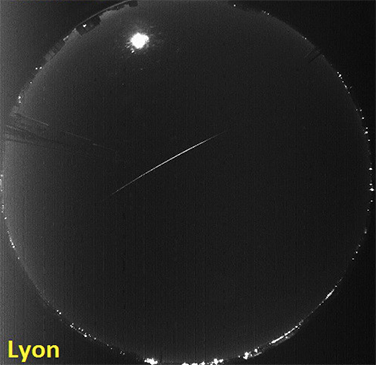
Ground based Mobile observation setup
Even a country-wide meteor camera network might not be able to record one specific meteor shower outburst, simply because of orbital geometry (day / night or North / South hemisphere). Such outburst might be extremeley rare events, happening once in decades, but can be predicted years in advance (e.g. Leonids, Draconids, birth of the Arids shower etc.). Therefore, a Mobile Observation METeor device was built: 2 suitcases each including 5 meteor dedicated cameras run with Odroid XU4Q or RaspBerry-pi are meant to be quickly setup for double-station observations, nearly anywhere on the ground, around the planet.
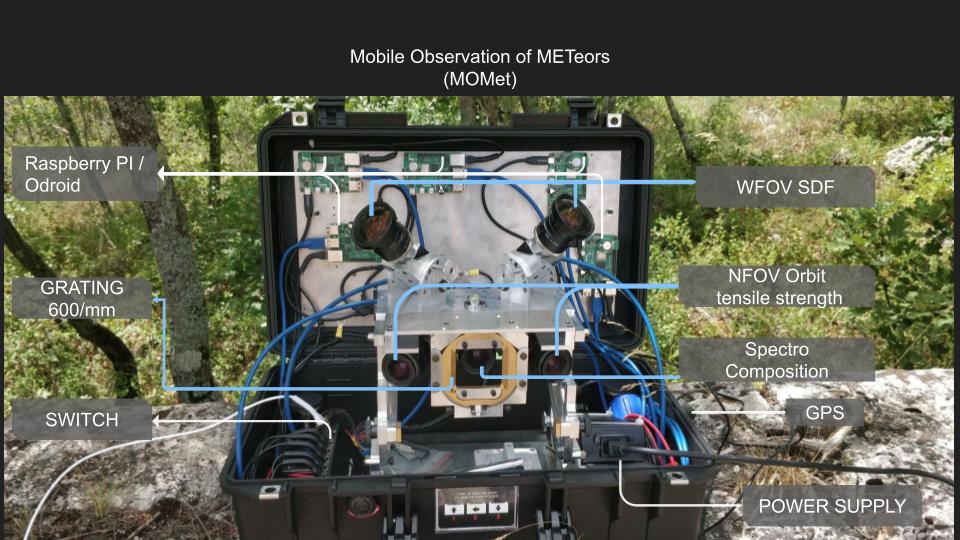
Observation campaigns
Several meteor shower observation campaigns were organised for development and scientific purposes.
Meteorite entry in the lab
What is best to understand a phenomenon than to have it in a laboratory? With the university of Stuttgart (IRS), artificial meteor disintegration were performed.
Air-based observations
Stratospheric based observations
The “Meteor Automated Light Balloon Experimental Camera” (MALBEC) project aims at guaranteeing the success of meteor shower observation even in case of cloudy weather. In collaboration with CNES, KYU-ACE and ScotopicLabs, a stratospheric platform is under development.
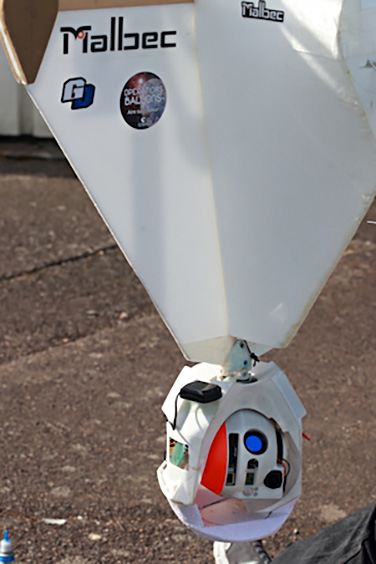
Airborne based observations
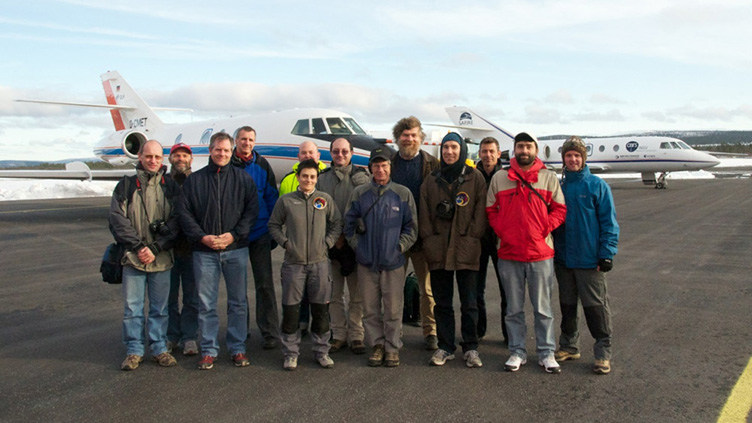
Meteor data reduction
Please see this page for an (almost) exhaustive list of existing tools for meteor astronomy
References
- Atreya et al., 2012, CCD modification to obtain high-precision orbits of meteoroids, MNRAS, 423.
- Bouley et al., 2012, Power and duration of impact flashes on the Moon: Implication for the cause of radiation, Icarus, 218.
- Christou et al., 2008, The P/Halley Stream: Meteor Showers on Earth, Venus and Mars, EM&P, 102.
- Domokos et al., 2007, Measurement of the meteoroid flux at Mars, Icarus, 191.
- Egal et al., 2017, The challenge associated with the robust computation of meteor velocities from video and photographic records, Icarus, 294.
- Granvik et al., 2012, The population of natural Earth satellites, Icarus, 218.
- Jenniskens & Vaubaillon, 2007, 3D/Biela and the Andromedids: Fragmenting versus Sublimating Comets, AJ, 134.
- Jenniskens & Vaubaillon, 2008, Predictions for the Aurigid Outburst of 2007 September 1, EM&P, 102.
- Koten et al., 2014, Three Peaks of 2011 Draconid Activity Including that Connected with Pre-1900 Material, EM&P, 112.
- Koten et al., 2015, Double station observation of Draconid meteor outburst from two moving aircraft, P&SS, 118.
- Koten et al., 2017, September epsilon Perseid cluster as a result of orbital fragmentation, A&A, 600, A74.
- Loehle et al., 2017, Experimental Simulation of Meteorite Ablation during Earth Entry using a Plasma Wind Tunnel, ApJ, 837.
- Neslušan et al., 2016, A study to improve the past orbit of comet C/1917 F1 (Mellish) on the basis of its observed meteor showers, A&A, 589A.
- Šegon et al., 2017, Dynamical modeling validation of parent bodies associated with newly discovered CMN meteor showers, A&A, 598, A15.
- Sekhar et al., 2016, Three-body resonance in meteoroid streams, MNRAS, 460.
- Stevanović et al., 2017, Bolide Airbursts as a Seismic Source for the 2018 Mars InSight Mission, SSRv, 211.
- Vaubaillon et al., 2005, A new method to predict meteor showers. I. Description of the model, A&A, 439.
- Vaubaillon et al., 2006, On the mechanisms leading to orphan meteoroid streams, MNRAS, 370.
- Vaubaillon & Reach, 2010, Spitzer Space Telescope Observations and the Particle Size Distribution of Comet 73P/Schwassmann-Wachmann 3, AJ, 139.
- Vaubaillon et al., 2011, The coming 2011 Draconids meteor shower, JIMO, 39.
- Vaubaillon et al., 2015, The 2011 Draconids: The First European Airborne Meteor Observation Campaign, EM&P, 114.
- Wiegert et al., 2009, A dynamical model of the sporadic meteoroid complex, Icarus, 201.
Last update Friday 22 September 2023